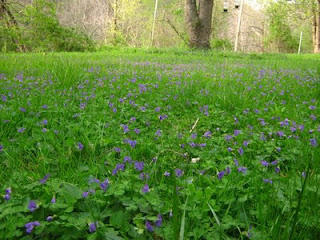For many years I have believed that we humans, especially those in the advanced, capitalist nations like the United States, were living on the edge of something, a precipice perhaps, or a chaotic whirlpool. We have been brought to this edge by gross disregard of the human and ecological consequences of our civilization's economic, technological and political actions.
In recent months, I have come to believe that we are no long on the edge, but have already crossed over and we are already falling or swirling in uncharted, unfamiliar territory, where the old rules and principles no longer provide us with trustworthy answers (if they ever did).
I believe that a majority of Americans know this in their bones, although they cannot bring themselves to recognize it consciously. It is the source of the profound anxiety, anger, and fear of our age, that manifests itself in a vulnerability to demagoguery, obsession with self-protection ("got to that gun with me to get a cup of coffee"), and xenophobia.
I was pleased to discover yesterday, that there are also a growing number of people who are consciously aware of our crossing over, and the need to respond in transformative ways not driven by fear, but reaching out for community. One place for such people to connect is the Dark Mountain Project whose manifesto is reproduced below:
‘We must unhumanise our views a little, and become confident"Dark Mountain" photograph by sgreerpitt June 2008, is a mountain top strip mine in Letcher County Kentucky.
As the rock and ocean that we were made from.’
- We live in a time of social, economic and ecological unravelling. All around us are signs that our whole way of living is already passing into history. We will face this reality honestly and learn how to live with it.
- We reject the faith which holds that the converging crises of our times can be reduced to a set of‘problems’ in need of technological or political ‘solutions’.
- We believe that the roots of these crises lie in the stories we have been telling ourselves. We intend to challenge the stories which underpin our civilisation: the myth of progress, the myth of human centrality, and the myth of our separation from ‘nature’. These myths are more dangerous for the fact that we have forgotten they are myths.
- We will reassert the role of story-telling as more than mere entertainment. It is through stories that we weave reality.
- Humans are not the point and purpose of the planet. Our art will begin with the attempt to step outside the human bubble. By careful attention, we will reengage with the non-human world.
- We will celebrate writing and art which is grounded in a sense of place and of time. Our literature has been dominated for too long by those who inhabit the cosmopolitan citadels.
- We will not lose ourselves in the elaboration of theories or ideologies. Our words will be elemental. We write with dirt under our fingernails.
- The end of the world as we know it is not the end of the world full stop. Together, we will find the hope beyond hope, the paths which lead to the unknown world ahead of us.







